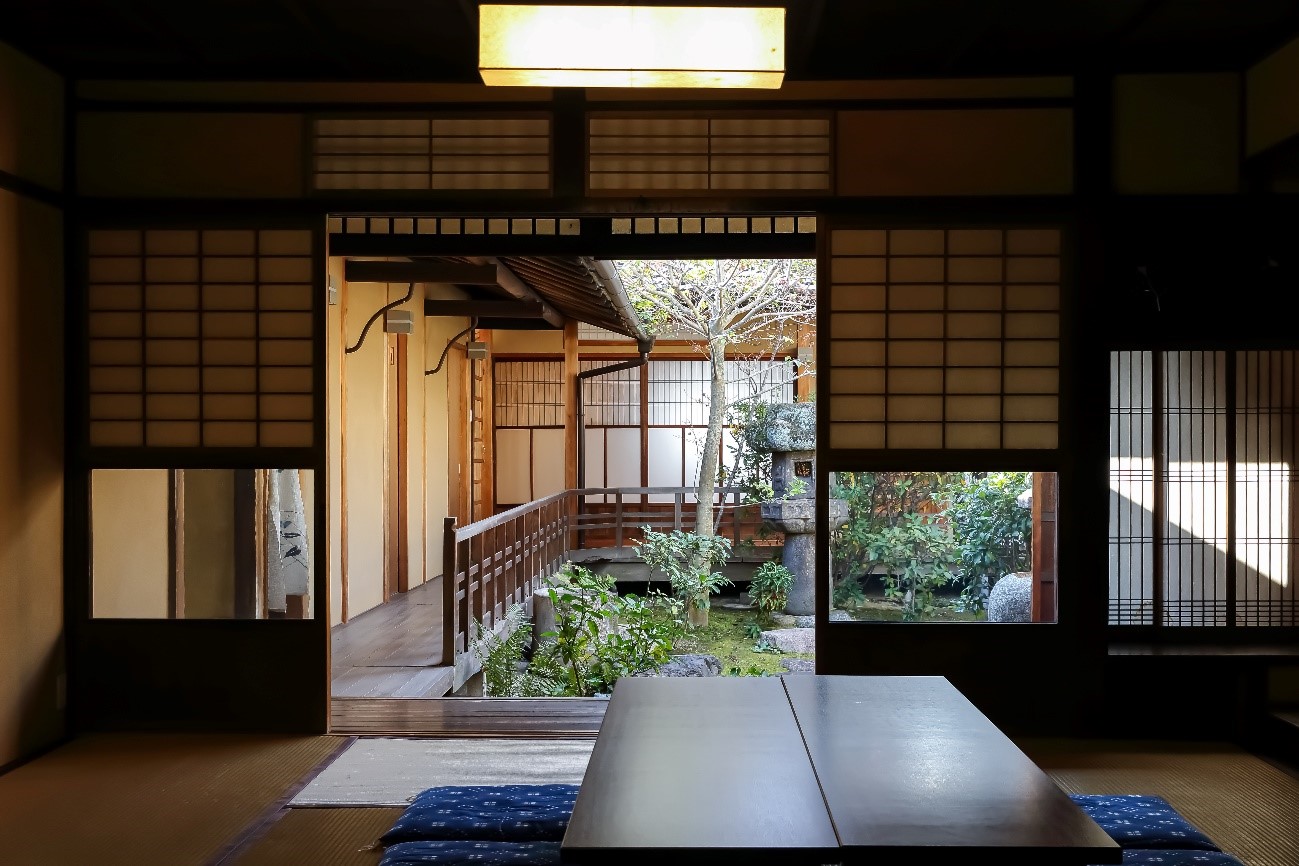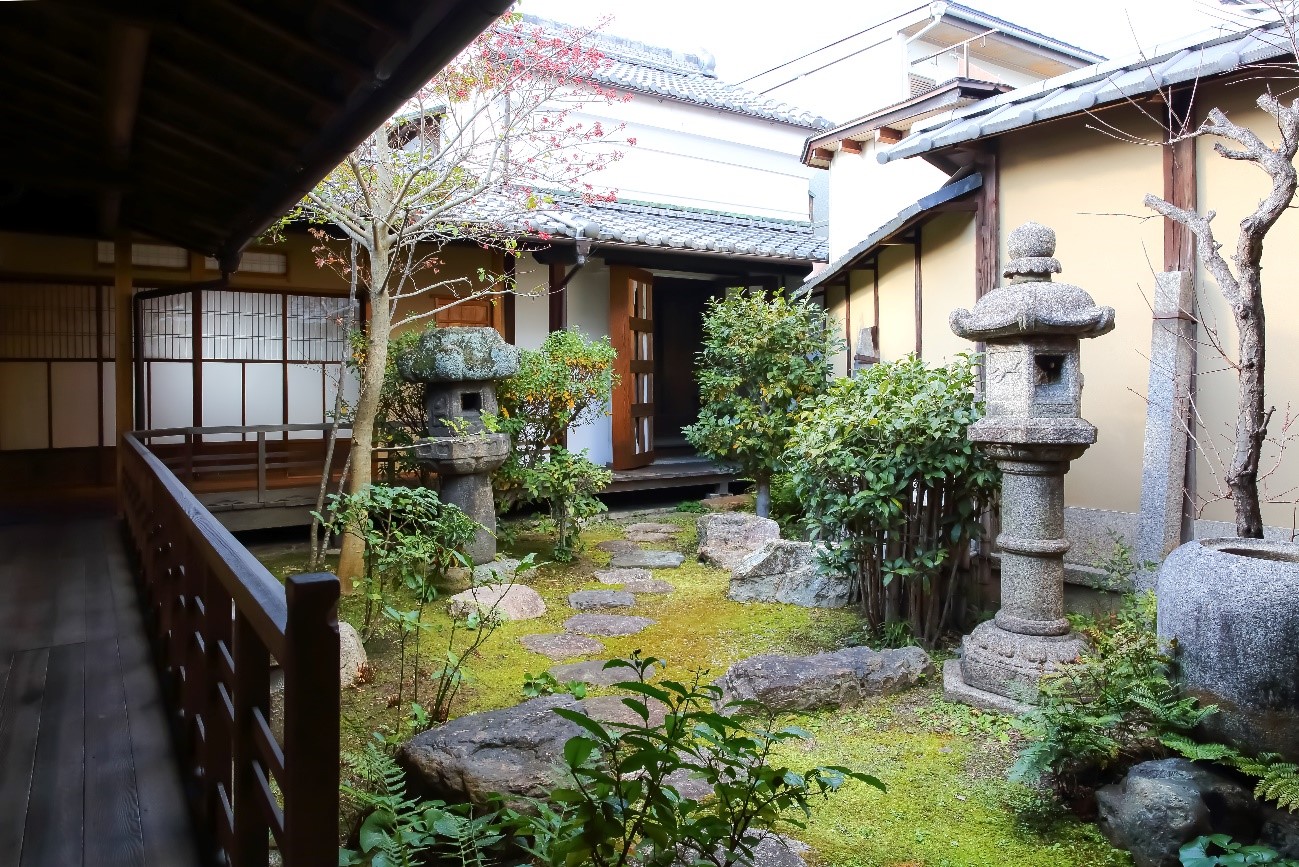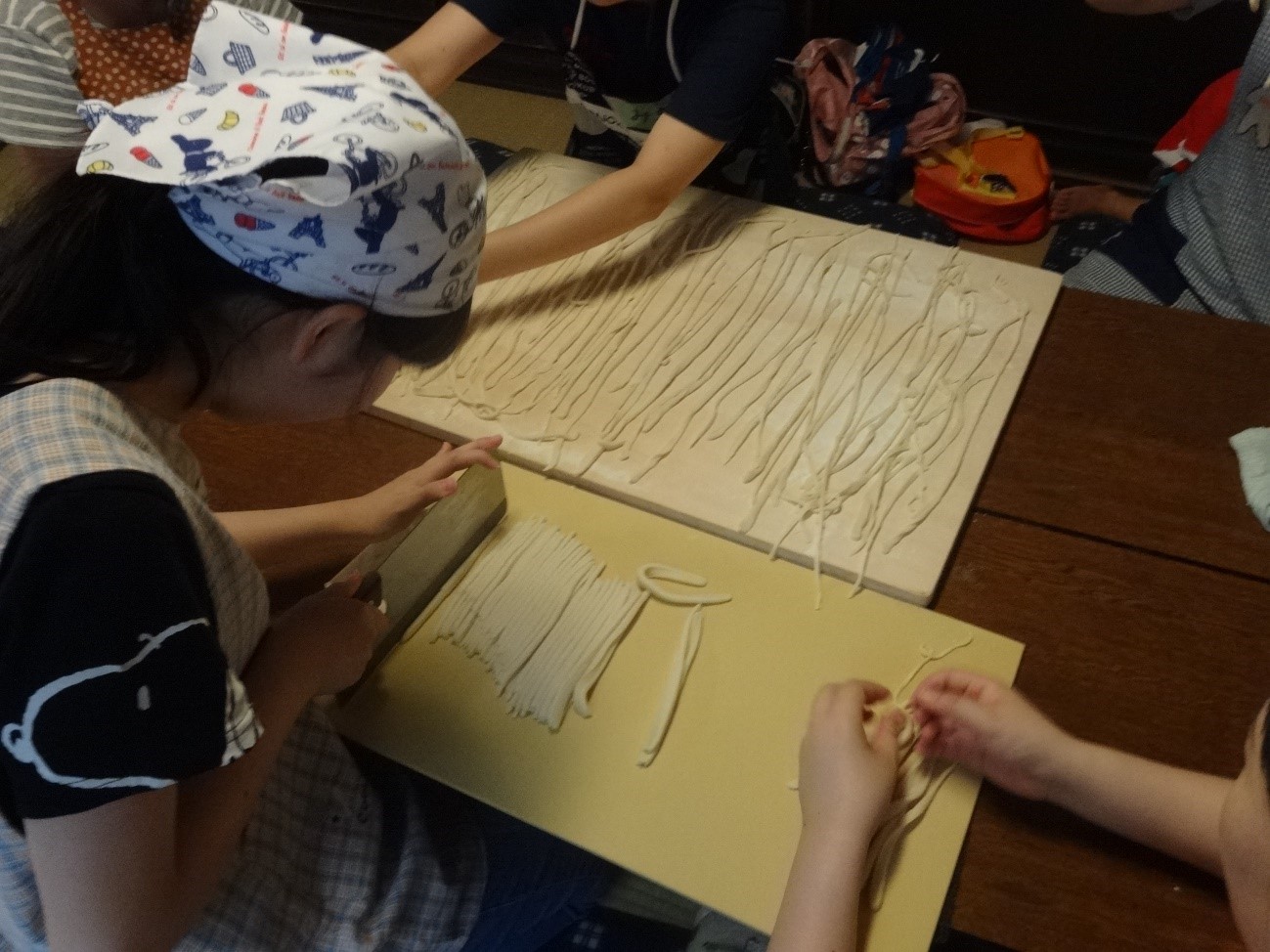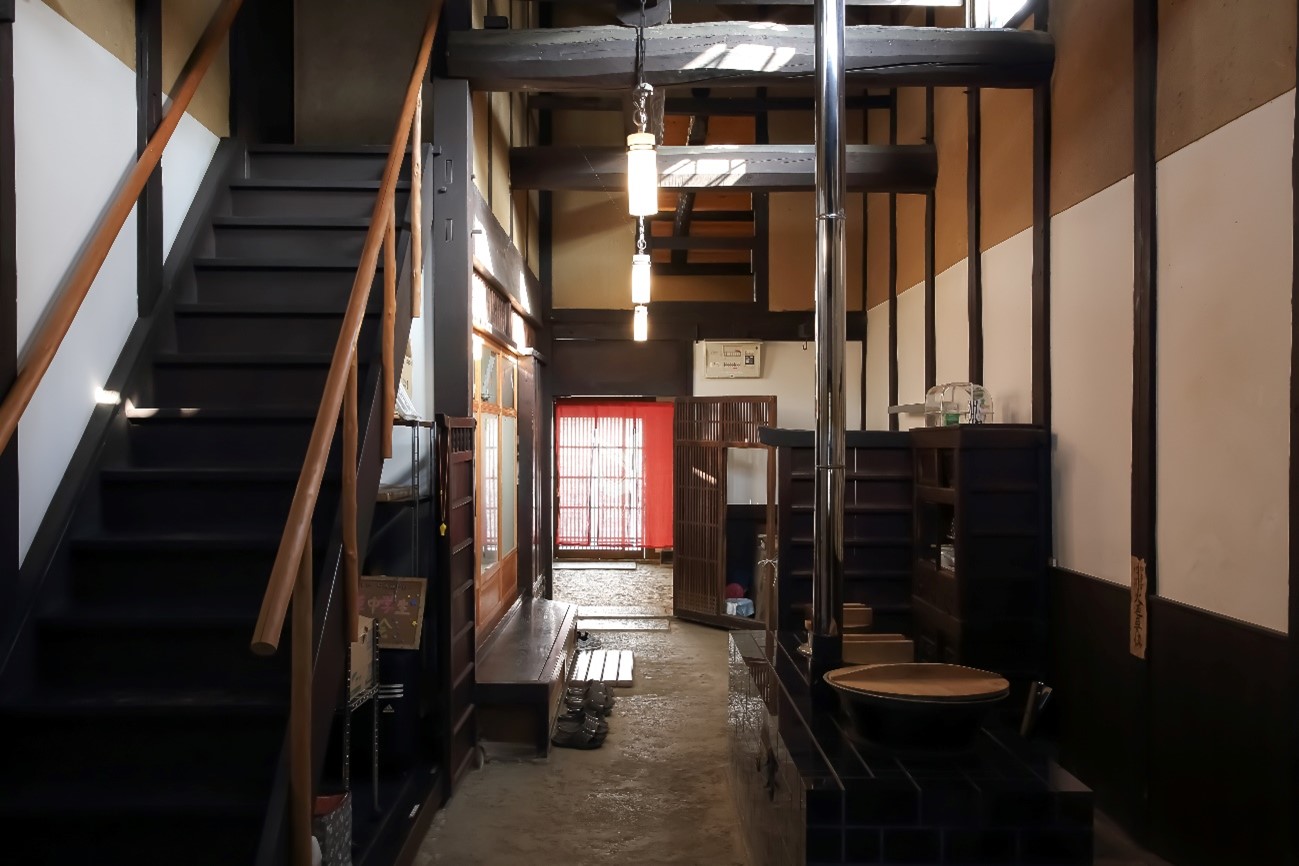
Some universities in Kyoto utilize Kyo-machiya townhouses as campus, which is an initiative unique to Kyoto. Among these universities, Ryukoku University Fukakusa Machiya Campus is the prime example. Since its opening in 2023, the campus has always been the place frequented by various students who engage themselves in activities. Mr. Hiroaki Hasegawa, who manages the Kyo-machiya townhouse, tells us about the initiative.
Profile
A campus using a Kyo-machiya townhouse, which Ryukoku University opened in 2013. It functions as a base for students to take the initiative in enhancing communication with the local community. The townhouse is a Structure of Landscape Importance, the first structure preserved in accordance with the Kyoto City Ordinance on Historical Architecture, and the designated Kyo-machiya townhouse under the city’s ordinance on Kyo-machiya.
Transformed the Kyo-machiya townhouse into a campus, preserving its historic atmosphere of the Edo period
The Kyo-machiya townhouse, the current Ryukoku University Fukakusa Machiya Campus, was built in the Edo period and originally used by a kimono fabric dealer. Located on the Honmachi-dori Street, the former main street called Fushimi-kaido, the townhouse is impressive to stand with its solid and wide frontage. There are still many other historic Kyo-machiya townhouses along the Honmachi-dori Street, which runs from north to south in the Fukakusa area. Among them, the townhouse of the Fukakusa Machiya Campus could be one of the representing structures.

|
| The Fukakusa Machiya Campus with beautiful large degoshi lattice windows. |
The townhouse consists of a main house with a mezzanine, a detached house, a courtyard, and storehouses, and it has features unique to Kyo-machiya such as degoshi lattice windows, tori-hisashi eaves, mushiko-mado windows, and okudosan kitchen stove. Before Ryukoku University turned the townhouse into a campus, it had been vacant for a long time and was deteriorating. The owner wanted to preserve the townhouse but was unable to find a tenant. In 2011, Ryukoku University was approached by the Fushimi Ward Office Fukakusa Branch to see if they could be the tenant. They started to discuss the possibility of using the townhouse as a campus and decided to utilize it as a center for interaction between the locals and students, hoping that they could help preserving the superb townhouse. After two years of renovation work by the owner, it was turned into the Fukakusa Machiya campus.

|
| The renovated hibukuro atrium retaining the historic atmosphere is also one of the Kyo-machiya’s major characteristics. |
At present, Ryukoku University students plan and manage events and other activities at the townhouse as a center for communication with the locals, making full use of the features of the townhouse.

|
| The tatami room on the first floor is the main center for students’ activities. |
A place for communication among students and the locals
What distinguishes Fukakusa Machiya Campus the most is its diverse use. Ryukoku University students can freely use the place. In addition, it serves as a classroom for seminars and lectures, a place for club activities and hobbies, and a space for community events. Furthermore, it functions as a base for a student organization called “Kyo-machiya Nana-iro Community,” which engages in community activities. Mr. Hasegawa says that the environment of the campus is perfect for the students to plan and manage their events by themselves, and they can improve their sense of responsibility, planning ability, and communication skills at the place. Their events including a summer festival and a Halloween party are open to the locals and very popular.

|
| The courtyard lies at the back of the tatami room, and the tearoom and storehouses are located further in the back. |
Of course, the relations with the local community has not been established smoothly from the beginning; there were less response from the locals when the campus was opened and not many students used the place. However, the students themselves seriously considered how to attract interests from the local community and continued to plan and conduct events which were accessible for both adults and children in the community. By doing so, the locals gradually approached the students for help with community events more often saying “We are organizing an event. Would you help us?” This is how the campus came to function as a place for communication.

|
| Udon noodle workshops for local children are very popular. |
In addition, the campus has become more accessible for the locals thanks to the fact that Mr. Hasegawa, the manager of the townhouse, is stationed at the campus, as well as to its uniqueness as a Kyo-machiya townhouse unlike a normal university campus. Mr. Hasegawa says that some elementary school students pop in and chat with him on their way home.
The Kyo-machiya townhouse, a base where students can grow through activities
Besides the fact that the campus is a place for communication between the students and the locals, the Kyo-machiya campus gives students many other advantages. For example, students can learn the wisdom of traditional lifestyles and experience the one unique to Kyoto. It is a valuable experience for both international and Japanese students. At the tearoom of the townhouse, students of the tea ceremony club sometimes hold a tea ceremony and invite the local residents.
|
|
| The tearoom at the back of the courtyard. Tea ceremony events are well received by the locals. |
At the campus, they also offer various workshops such as a food and nutrition education program, in which participants cultivate vegetables in a field at the back of the townhouse, harvest them, cook them on the okudosan kitchen stove, and taste them. Furthermore, the campus is open as a terakoya private school every Thursday, and students of the Faculty of Letters, who wish to become teachers, teach junior high school students to prepare for their entrance exams. It is a very meaningful opportunity for both students. All these activities are possible because the Kyo-machiya townhouse is utilized as a campus.

|
| The tori-niwa passage where the okudosan kitchen stove is located. It is a typical view of a Kyo-machiya townhouse. |
“This townhouse is not just a campus. Its strength is being a base for interaction among students and the locals, where the students can significantly grow mentally. Unfortunately, they were unable to conduct activities during the pandemic, so I would like to get things going for them to be active as before,” says Mr. Hasegawa. We look forward to the future of Fukakusa Machiya Campus, where a wide variety of student-led events will be organized.

